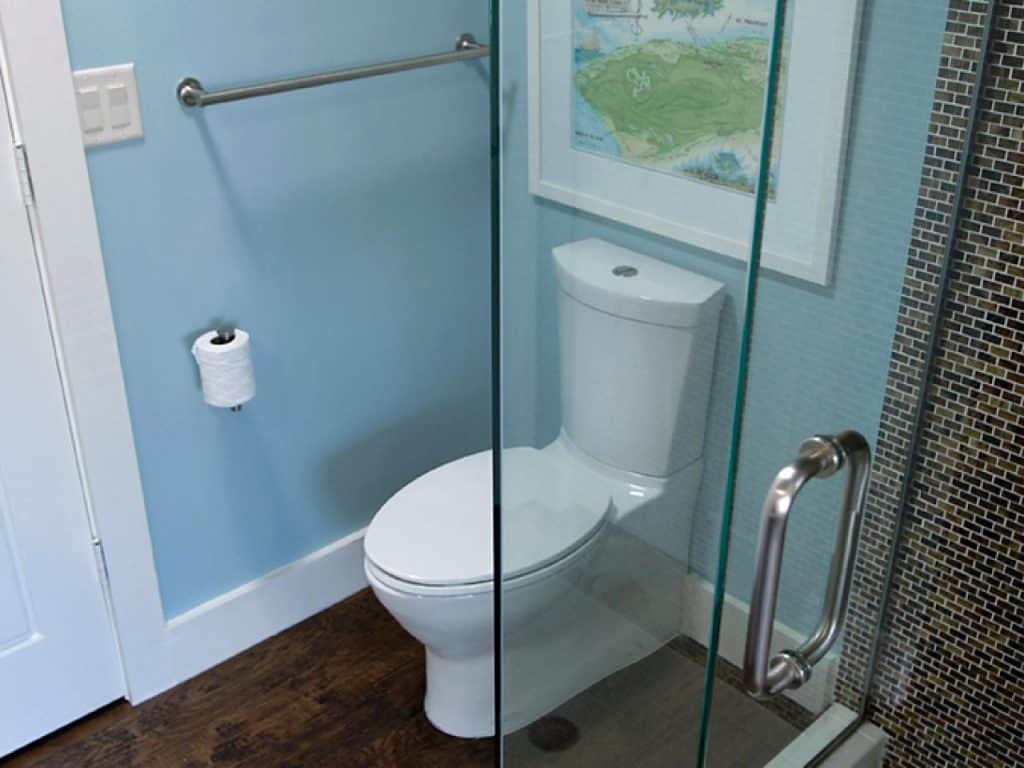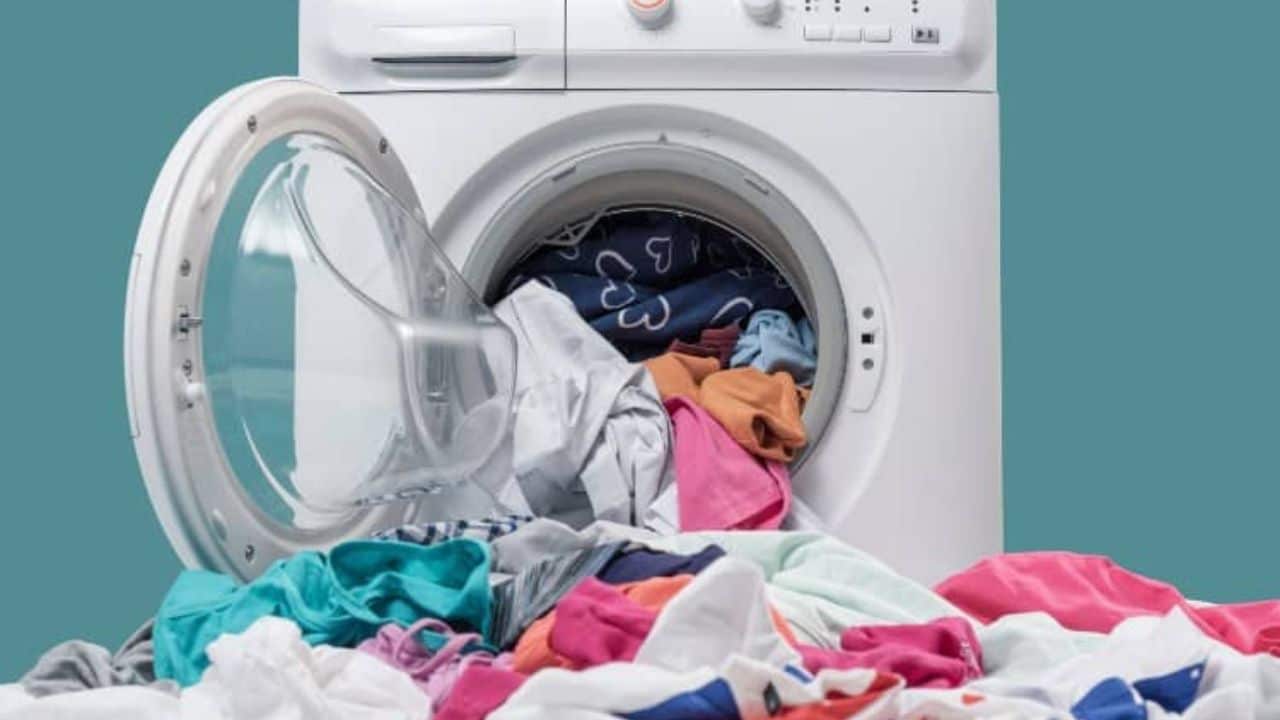In a world increasingly concerned with water conservation and environmental sustainability, low flow toilets are a practical and eco-friendly solution. These innovative toilets use significantly less water per flush than traditional toilets, reducing water consumption and contributing to overall water conservation efforts.
However, despite their benefits, low-flow toilets are often met with skepticism and concerns about their performance and effectiveness.
In this comprehensive guide, we will discuss low-flow toilets, addressing common questions, addressing misconceptions, and providing insights into their optimal usage and maintenance.
Table of contents
- What Are Low Flow Toilets?
- What Are The Different Types Of Low-Flow Toilets?
- What Are the Benefits of Low-Flow Toilets?
- What Are The Common Misconceptions With Low Flow Toilets?
- How Do I Maintain A Low-Flow Toilet?
- How Do I Address Common Challenges With Low Flow Toilets?
- How Can I Save Water With My Low-Flow Toilet?
- What Is The Difference Between A Low-Flow Toilet And A High-Efficiency Toilet (HET)?
- What Are The MaP Ratings Of Low-Flow Toilets?
- How Do I Choose The Right Low Flow Toilet For My Home?
- What Are The Rebates And Tax Incentives For Low-Flow Toilets?
- How Can I Dispose Of My Old Toilet Responsibly?
- FAQs
- Conclusion
- References
- Recommendations
What Are Low Flow Toilets?
Low-flow toilets are toilets designed to use 1.6 gallons or less of water per flush, compared to the 3.5 gallons or more used by traditional toilets. This reduction in water usage can help conserve precious water resources, especially in drought-stricken areas.
Read also: What Does It Mean To Dream About Toilet?
What Are The Different Types Of Low-Flow Toilets?
Low-flow toilets, also known as high-efficiency toilets (HETs), are designed to use 1.6 gallons or less of water per flush, compared to the 3.5 gallons or more used by traditional toilets. These toilets are a great way to conserve water and save money on your water bill. There are three main types of low-flow toilets:
1. Gravity-Flush Toilets

Gravity-flush toilets are the most common type of low-flow toilet. They use the force of gravity to pull water down the toilet bowl and remove waste. Gravity-flush toilets are typically the most affordable and efficient type of low-flow toilet.
How Gravity-Flush Toilets Work
When you flush a gravity-flush toilet, a flapper valve at the bottom of the tank is lifted, allowing water to rush into the bowl. The water in the bowl creates a siphon, which pulls the waste out of the bowl and into the sewer drain.
Pros of Gravity-Flush Toilets
- Affordable
- Efficient
- Easy to install and maintain
Cons of Gravity-Flush Toilets
- May not be as powerful as other types of low-flow toilets
- May require more frequent flushing for larger or more solid waste
2. Pressure-Assisted Toilets

Pressure-assisted toilets use a pressurized tank of air to force water down the toilet bowl. This can provide a more powerful flush that is more effective at removing waste. Pressure-assisted toilets are typically more expensive than gravity-flush toilets.
How Pressure-Assisted Toilets Work
When you flush a pressure-assisted toilet, a valve is opened, releasing pressurized air from a tank into a chamber beneath the toilet bowl. This pressurized air forces water into the bowl, creating a powerful flush.
Pros of Pressure-Assisted Toilets
- More powerful flush
- Less likely to clog
Cons of Pressure-Assisted Toilets
- More expensive
- Noisier
3. Dual-Flush Toilets

Dual-flush toilets offer two flush options: one for liquid waste and one for solid waste. The button for liquid waste uses less water than the button for solid waste. This can help to save even more water, especially if you only flush for liquid waste most of the time.
How Dual-Flush Toilets Work
Dual-flush toilets have two buttons or levers, one for a full flush and one for a half flush. The full flush uses more water to remove solid waste, while the half flush uses less water for liquid waste.
Pros of Dual-Flush Toilets
- Saves even more water
- More environmentally friendly
Cons of Dual-Flush Toilets
- More expensive than single-flush toilets
- May require some adjustment to get used to using two buttons
See also: What Does it Mean To Dream about Urinating?
What Are the Benefits of Low-Flow Toilets?
Here are the key benefits of low flow toilets:
- Water Conservation: Low-flow toilets significantly reduce water consumption compared to traditional toilets. They use 1.6 gallons or less of water per flush, whereas traditional toilets can use up to 3.5 gallons or more. This reduction in water usage can help conserve precious water resources, especially in drought-stricken areas.
- Cost Savings: By using less water, low-flow toilets can help homeowners save money on their water bills. The exact amount of savings will vary depending on water rates and usage patterns, but it can be substantial over time.
- Environmental Benefits: Reducing water consumption also helps reduce the environmental impact of wastewater treatment. Lower water usage means less energy is needed to pump, treat, and dispose of wastewater, leading to a smaller carbon footprint.
- Improved Sewer System Health: By reducing the volume of water entering the sewer system, low-flow toilets help alleviate strain on sewer infrastructure. This can minimize the risk of sewer overflows and improve the overall health of the sewer system.
- Government Incentives: Many local governments and utility companies offer rebates or tax incentives for purchasing and installing low-flow toilets. These incentives can make low-flow toilets more affordable and encourage wider adoption.
- Durability and Performance: Modern low flow toilets are designed with advanced flushing mechanisms that ensure effective waste removal. They use a combination of gravity, water pressure, and strategically placed jets to thoroughly flush and remove waste.
- Sustainability and Future-Readiness: Switching to low-flow toilets is a proactive step towards a more sustainable future. By conserving water and reducing the environmental footprint of household water usage, low-flow toilets contribute to a more environmentally conscious lifestyle.
What Are The Common Misconceptions With Low Flow Toilets?
Despite their numerous benefits, low flow toilets are often met with misconceptions and concerns regarding their performance and effectiveness. Here’s a closer look at some common concerns and their corresponding explanations:
Myth 1: Low-flow toilets don’t flush properly.
Reality: Modern low-flow toilets are designed with advanced flushing mechanisms that ensure effective waste removal. These toilets utilize a combination of gravity, water pressure, and strategically placed jets to thoroughly flush and remove waste.
Myth 2: Low-flow toilets require more frequent flushing.
Reality: Contrary to popular belief, low-flow toilets do not require more frequent flushing than traditional toilets. Modern low-flow toilets are designed to effectively remove waste with a single flush, eliminating the need for multiple flushes.
Myth 3: Low-flow toilets are more expensive than traditional toilets.
Reality: While the initial cost of some low-flow toilets may be slightly higher than traditional toilets, the long-term savings on water bills and potential rebates often make them a more cost-effective choice over time.
How Do I Maintain A Low-Flow Toilet?
To ensure optimal performance and longevity of your low-flow toilet, proper maintenance is essential. Here are some key maintenance tips:
Regular Cleaning: Regularly clean the toilet bowl and rim with a mild detergent or specialized toilet bowl cleaner to prevent the buildup of grime and stains that can impede proper flushing.
Cleaning the Flush Mechanism: Periodically clean the flush mechanism to remove any mineral deposits or debris that could interfere with its operation. Consult your toilet’s manual for specific cleaning instructions.
Water Supply Check: Ensure that the water supply to the toilet is adequate and consistent. A weak water supply can hinder the toilet’s flushing power.
How Do I Address Common Challenges With Low Flow Toilets?
If you encounter issues with your low-flow toilet, here are some troubleshooting tips:
Clogged Toilet: If the toilet clogs, use a plunger specifically designed for low-flow toilets. Avoid using harsh chemicals that could damage the toilet’s components.
Weak Flush: If the flush seems weak, check the water supply and ensure it’s adequate. Also, clean the flush mechanism and check for any debris that could be obstructing the water flow.
Phantom Flushes: If the toilet flushes randomly, check for a malfunctioning flapper or fill valve. Consult your toilet’s manual for specific troubleshooting steps.
How Can I Save Water With My Low-Flow Toilet?
In addition to proper maintenance, there are a few other things you can do to save water with your low-flow toilet:
- Flush less often. Only flush when you need to. If you’re just getting rid of liquid, you can often just use the toilet brush and water to clean the bowl.
- Put a brick or weight in the tank. This will raise the water level in the tank, which will give you a more powerful flush.
- Use a dual-flush toilet. Dual-flush toilets have two buttons: one for liquid waste and one for solid waste. The button for liquid waste uses less water than the button for solid waste.
Read also: How Heat Pumps Work
What Is The Difference Between A Low-Flow Toilet And A High-Efficiency Toilet (HET)?
The terms “lowflow toilet” and “high-efficiency toilet” (HET) are often used interchangeably, but there is a small difference between the two.
Low-flow toilets are defined as toilets that use 1.6 gallons or less of water per flush. This is a standard set by the Environmental Protection Agency (EPA) to reduce water consumption and conserve water resources.
High-efficiency toilets (HETs) are a subset of low-flow toilets that meet or exceed the EPA’s WaterSense standard. WaterSense is a labeling program that identifies products that meet EPA water efficiency criteria. HETs must use 1.28 gallons or less of water per flush, and they must also meet performance requirements for flushing waste and preventing clogs.
In other words, all HETs are low-flow toilets, but not all low-flow toilets are HETs. Low-flow toilets that do not meet the EPA’s WaterSense standard may not be as efficient or effective as HETs.
What Are The MaP Ratings Of Low-Flow Toilets?
The Maximum Performance (MaP) rating is a measure of a toilet’s ability to remove solid waste. It is a rating system developed by the Water Efficiency and Conservation Coalition (WECC) and is used by many manufacturers of low-flow toilets. The MaP rating is measured in grams, and a higher MaP rating indicates a better ability to remove waste.
The EPA recommends a MaP rating of at least 350 grams for low-flow toilets. This means that a toilet with a MaP rating of 350 grams or higher should be able to remove a waste mass of 350 grams or more in a single flush.
How Do I Choose The Right Low Flow Toilet For My Home?
There are a few factors to consider when choosing a low-flow toilet for your home:
- MaP rating: Ensure the toilet has a MaP rating of at least 350 grams.
- Water efficiency: Check the WaterSense label to ensure the toilet meets EPA water efficiency standards.
- Type of toilet: Choose between a gravity-flush or pressure-assisted toilet based on your preferences.
- Brand reputation: Opt for a reputable brand known for producing high-quality low-flow toilets.
The best type of low-flow toilet for you will depend on your individual needs and preferences. If you are on a budget, a gravity-flush toilet is a good option, but if you want a more powerful flush, a pressure-assisted toilet is a better choice. If you want to save even more water, a dual-flush toilet is the best option.
What Are The Rebates And Tax Incentives For Low-Flow Toilets?
Many local governments and utility companies offer rebates or tax incentives for purchasing and installing low-flow toilets. These incentives are designed to encourage homeowners to switch to more water-efficient toilets, which can help to conserve water and reduce strain on wastewater treatment plants.
Types of Rebates and Tax Incentives
The types of rebates and tax incentives available for low-flow toilets vary depending on the location. However, some common types of incentives include:
- Cash rebates: These rebates are typically offered directly to homeowners who purchase and install low-flow toilets. The amount of the rebate may vary depending on the type of toilet and the location.
- Tax credits: These credits can reduce the amount of income tax that homeowners owe. The amount of the tax credit may vary depending on the type of toilet and the location.
- Discounts on water bills: Some utility companies offer discounts on water bills for homeowners who install low-flow toilets. The amount of the discount may vary depending on the type of toilet and the location.
Read also: 10 Best Tools for New Homeowner in 2023 | Best Tools
Eligibility for Rebates and Tax Incentives
To be eligible for rebates or tax incentives for low-flow toilets, homeowners must typically meet certain requirements. These requirements may vary depending on the location, but they may include:
- Installing a WaterSense-labeled toilet: WaterSense is a labeling program that identifies products that meet EPA water efficiency criteria.
- Replacing an older, less efficient toilet: The old toilet must typically be at least 1.6 gallons per flush.
- Providing proof of purchase and installation: Homeowners will typically need to provide receipts or other documentation to prove that they purchased and installed a low-flow toilet.
How to Find Rebates and Tax Incentives
To find rebates and tax incentives for low-flow toilets in your area, you can check the following resources:
- Your local government: Many cities and counties offer rebates or tax incentives for low-flow toilets. You can visit the website of your local government or contact them directly for more information.
- Your utility company: Many utility companies offer discounts on water bills for homeowners who install low-flow toilets. You can check the website of your utility company or contact them directly for more information.
- The EPA’s WaterSense website: The EPA’s WaterSense website has a searchable database of rebates and tax incentives for low-flow toilets. You can search by location, type of toilet, and other factors.
Examples of Rebates and Tax Incentives
Here are a few examples of rebates and tax incentives for low-flow toilets:
- Los Angeles: The city of Los Angeles offers a rebate of up to $100 for homeowners who purchase and install a WaterSense-labeled toilet.
- Portland, Oregon: The city of Portland offers a tax credit of up to $50 for homeowners who purchase and install a WaterSense-labeled toilet.
- Seattle: The Seattle Public Utilities offers a discount of up to $100 on water bills for homeowners who install a WaterSense-labeled toilet.
By taking advantage of rebates and tax incentives, homeowners can save money on the purchase and installation of low-flow toilets. Additionally, low-flow toilets can help homeowners save money on their water bills over time.
How Can I Dispose Of My Old Toilet Responsibly?
Disposing of an old toilet responsibly is crucial to protect the environment and ensure that hazardous materials are recycled or disposed of properly. Here are the steps on how to dispose of your old toilet responsibly:
- Empty the toilet of all water and waste: Flush the toilet several times to remove any remaining water and waste. Drain the water tank and flush the toilet again to ensure it is empty.
- Remove any removable parts: Detach the tank from the bowl, remove the seat, flush valve, and any other removable parts. These parts can be recycled or disposed of separately.
- Drain the water from the toilet bowl: Carefully remove the wax ring from the base of the toilet and place it in a sealed container. The wax ring can be recycled or disposed of at a hazardous waste facility.
- Break down the toilet into smaller pieces: If possible, break down the toilet into smaller pieces to make it easier to transport and dispose of. Use a hammer or other heavy object to break the porcelain into manageable chunks.
- Wrap and label the toilet parts for safe transport: Wrap the broken toilet pieces in sturdy cardboard or plastic to prevent them from scattering or causing damage. Label the packaging with the words “Hazardous Waste” and “Toilet” to ensure it is handled properly.
- Contact your local waste management or recycling center: Contact your local waste management or recycling center to inquire about their policies for disposing of old toilets. They may be able to collect your toilet for proper recycling or disposal, or they may provide instructions on how to dispose of it yourself.
See also: Don’t Waste My Time Quotes
FAQs
Ensure the water supply is adequate, clean the toilet regularly, and maintain the flush mechanism according to the manufacturer’s instructions. If issues persist, consult a plumber for professional assistance.
Some older low-flow models may require more frequent flushing, but modern low-flow toilets are designed to effectively flush waste with a single flush.
Regularly clean the toilet bowl and rim with a mild detergent or specialized toilet bowl cleaner. For stubborn stains, use a pumice stone or vinegar solution.
Adjust the water level by adjusting the fill valve. Consult your toilet’s manual for specific instructions.
Yes, low flow toilets are generally good for septic tanks. They use less water, which can help to reduce the load on the septic system. Additionally, some low-flow toilets have special features that can help prevent clogging, which can also be a problem for septic tanks.
Conclusion
Low-flow toilets are a great way to conserve water and save money. With proper maintenance, they can provide years of reliable service. Understanding the benefits and addressing common concerns ensure that you confidently make the switch to low flow toilets and contribute to a more sustainable future.
References
- home.howstuffworks.com – How Low-flow Toilets Flush Your Waste Without Wasting Water
- vevano.com – The Ultimate Guide to Toilets: Info that Won’t Go to Waste
Recommendations
- 10 Best Tools For Removing Tiles In 2023 | Best Tools
- 10 Best Tools for Landscaping in 2023 | Best Tools
- Best Tools for Budgeting in 2023
- 10 Best Tools for Social Media Marketing in 2023 | Best Tools
- 10 Best Tools For Writers In 2023 | Best Tools
- Best Tools for SEO In 2023 | Best Tools
- 10 Best Tools For HVAC In 2023
- 10 Best Tools For Clearing Brush | Best Tools
DISCLOSURE: This post may contain affiliate links, meaning when you click the links and make a purchase, we receive a commission.






1 comment
Comments are closed.